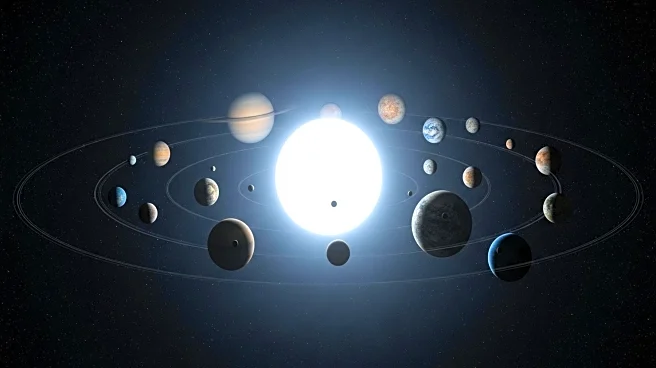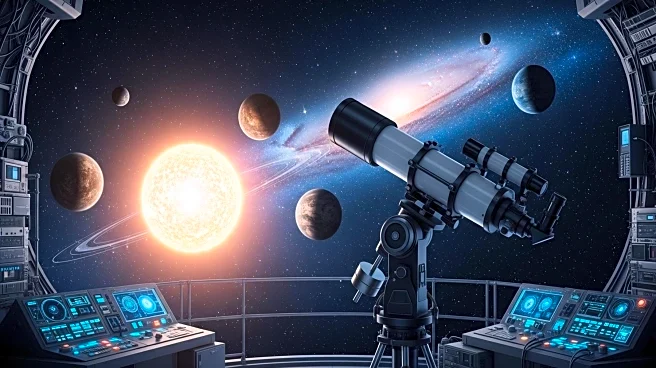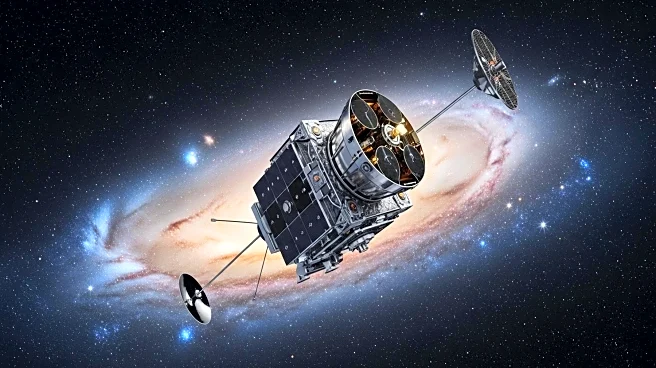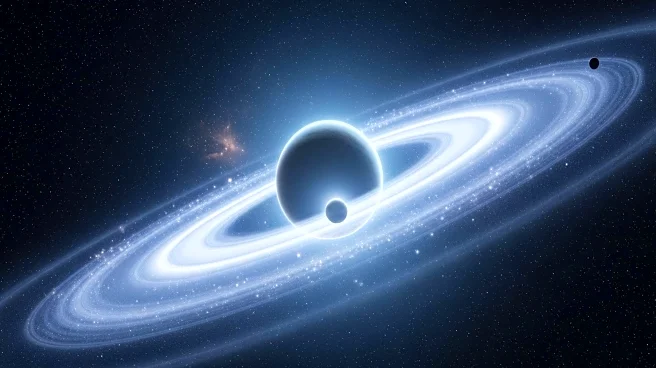What's Happening?
Recent research has suggested that planets orbiting white dwarf stars may have a greater potential for hosting life than previously thought, thanks to Einstein's theory of general relativity. White dwarfs are remnants of sun-like stars that can remain warm for billions of years, making them intriguing targets in the search for extraterrestrial life. Historically, the habitable zone around these stars was considered limited due to the gravitational influence of nearby planets, which could cause tidal heating and render planets uninhabitable. However, the new study, published on the preprint database arXiv, indicates that general relativity can protect these planets from being pulled into elliptical orbits, thus preventing excessive heating. This finding expands the window of habitability for planets in these systems, offering new possibilities for life to develop.
Why It's Important?
The implications of this research are significant for the field of astrobiology and the search for extraterrestrial life. By expanding the criteria for habitability, scientists may identify more potential sites for life beyond Earth, particularly around white dwarf stars. This could lead to a broader understanding of where life might exist in the universe and influence future astronomical research and exploration missions. The study also highlights the importance of considering advanced physics theories, such as general relativity, in planetary science, which could refine models of planetary habitability and guide the search for life in the cosmos.
What's Next?
Further research and peer review are necessary to validate these findings and explore their implications. If confirmed, astronomers may prioritize the study of white dwarf systems in their search for habitable planets. This could involve deploying advanced telescopes and space missions to observe these systems more closely. Additionally, the study may inspire new theoretical work to explore other aspects of general relativity's impact on planetary systems, potentially leading to discoveries about the conditions necessary for life.
Beyond the Headlines
The study raises intriguing questions about the nature of life and its potential development in environments previously deemed inhospitable. It challenges existing paradigms in planetary science and could lead to a reevaluation of the factors that make a planet suitable for life. This research also underscores the interconnectedness of physics and astronomy, demonstrating how advancements in one field can profoundly impact another.










